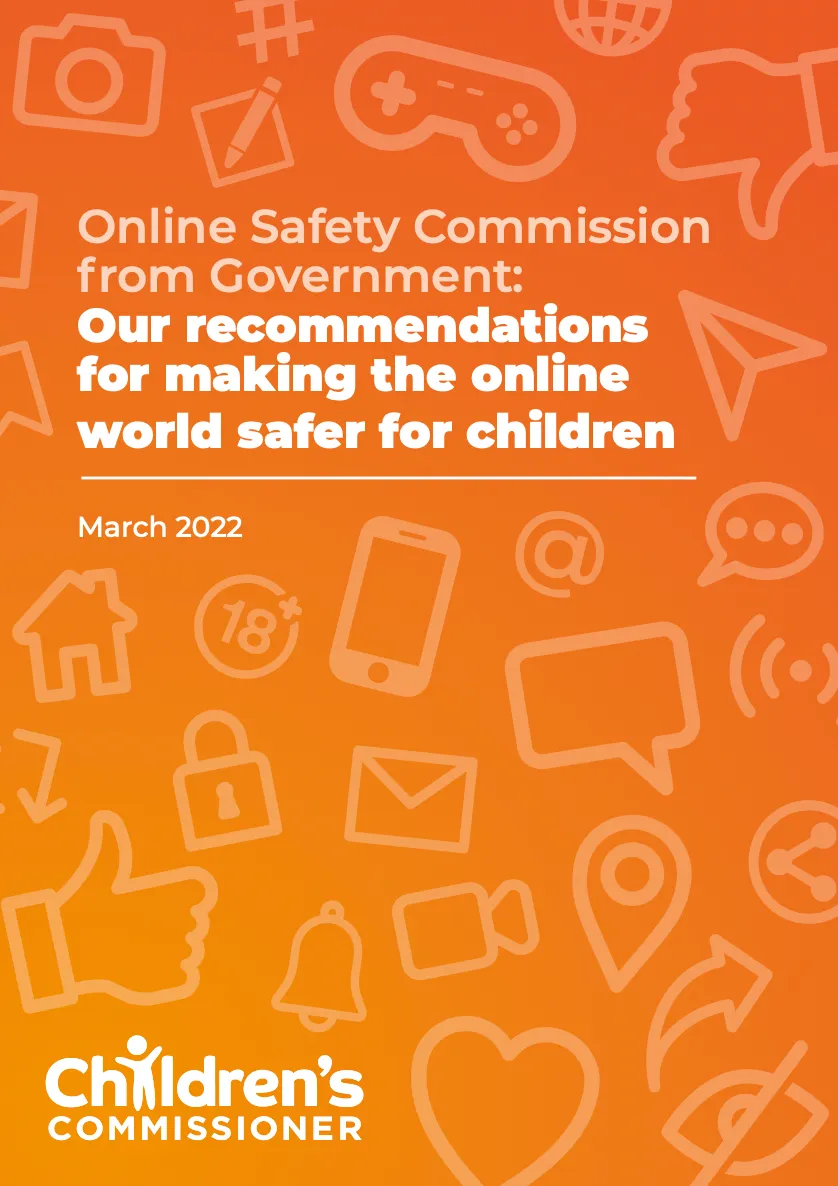
1. Our findings from children and young people
We spoke to a wide range of teenagers and young adults in schools, colleges, and universities to understand the factors fuelling sexual violence in schools, with a particular focus on inappropriate content, including pornography. These interviews and focus groups also provided insight into the prevalence and dynamics of online peer‐on‐peer sexual harassment and abuse. Children and young people told us that:
> They feel that there are high levels of harmful attitudes and behaviours amongst young people, and these behaviours are being shaped by exposure to inappropriate content and culture online. This content at best, depicts unrealistic bodies and sexual activities, and at worst normalises sexual violence and rape. This includes pornography, but also other harmful content and culture such as:
Hyper‐sexualised material on social media platforms, often directly promoted by recommendation algorithms.⁷
Extreme dieting content and material promoting body dysmorphia and eating disorders (e.g. “pro‐ana” content) which, despite clampdowns in recent years,
is still prevalent on mainstream social media platforms⁸ and accessible via search engines.⁹
Heavily‐edited and filtered images which children and young people tell us are normalised. Children told us they wouldn’t consider posting a photo to social media without first editing and/or applying filters. This can contribute to negative self‐perception and body dysmorphia.¹⁰
Exposure to trolling and misogynistic cultures which promote sexual violence on social media, messaging, and gaming platforms and on other online forums.
> Sexual harassment and abuse is perpetrated on online platforms. Although many of the behaviours and attitudes driving the harassment of girls are not new, digital devices enable sexual violence to manifest with greater prevalence and persistence. Tech companies know about this but remain slow to act.
The dynamics of technology‐facilitated abuse are constantly evolving, but manifestations include:
− Image‐based abuse: the non‐consensual sharing of nude images and videos among peer groups, and unsolicited nudes (‘cyberflashing’).¹¹
− Unwanted and persistent solicitation for nudes; the Ofsted Review found that girls can be contacted by up to 10 or 11 different boys a night asking for nude/semi‐nudes.¹² The children we spoke to confirmed that harassment for nudes was commonplace.
− Anonymous trolling and ‘bait‐out’ pages.
− Sexualised and body‐shaming comments under photos and posts.
− Grooming by private message.
− Livestreaming of abuse, including coerced sexual acts on livestream platforms.
− Exposure to inappropriate spaces and experience of sexual abuse on VR platforms.¹³
> Children rarely report online sexual harassment and abuse either directly to platforms, or to schools/colleges and parents.
− Young people lack faith in online reporting systems, complaining that they are slow and unresponsive. Furthermore, reports and removals are easily circumvented by offenders – e.g. by setting up a new account – and young people feel little is done to prevent this.
− Young people also told us that adults often don’t understand the dynamics of online abuse, and for this reason they feel there is little point in talking to a parent,carer or teacher about these issues. It was very troubling that a number of girls said they would fear being victim‐blamed if their nudes were shared without consent.
⁷ 5Rights (2021) Pathways: How digital design puts children at risk Section 4
⁸ Ibid.
⁹ CCO found that searches for ‘pro‐ana’, ‘thinspiration’, ‘pro ana binge’ on Microsoft Bing and ‘pro ana bing’ on Google retrieved results for harmful so‐called “pro‐anorexic” websites and forums which promote eating disorders as a lifestyle choice and offer practical tips and support for eating disorder sufferers. [24/02/2022]
¹⁰ See also: Joint Committee on the Draft Online Safety Bill (October 2021) Oral Evidence by Frances Haugen p.16
¹¹ Definitions are consistent with UCL IoE, SSE, University of Kent, ASCL (2021) Understanding and Combatting Youth Experiences of Image‐Based Sexual Harassment and Abuse
¹² Ofsted (2021) Review of sexual abuse in schools and colleges
¹³ BBC News (2022) “Metaverse allows kids into virtual strip clubs”. Retrieved 4th March 2022